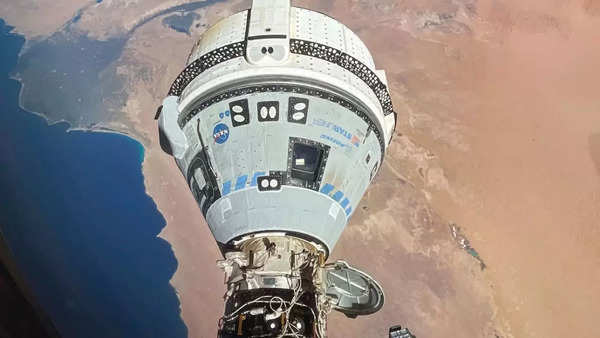Sunita Williams, a veteran astronaut with Indian-American heritage, and her colleague Butch Wilmore embarked on their mission to the ISS on June 5, 2024. The mission was intended to test the capabilities of the Boeing Starliner, a spacecraft developed as part of NASA’s Commercial Crew Program. However, as the Starliner approached the ISS, several technical problems emerged, including leaks in its propulsion system and the malfunctioning of some thrusters. These issues have rendered the spacecraft unsafe for the astronauts’ return journey.
The delay has extended Williams and Wilmore’s stay on the ISS far beyond the planned duration. NASA officials have indicated that the astronauts might remain in space until February 2025, as they explore alternative options for their safe return. One potential solution under consideration is to use a SpaceX Crew Dragon spacecraft, which is scheduled for a mission to the ISS in September 2024. This plan would involve returning the astronauts to Earth with the Crew Dragon in February 2025, leaving the Starliner to return uncrewed.
The situation has emphasized the ongoing competition and challenges within the commercial space industry. Boeing, once a dominant player in aerospace, has faced numerous setbacks with the Starliner program. The spacecraft’s development has been plagued by delays and technical issues, raising concerns about its reliability and safety. In contrast, SpaceX’s Crew Dragon has successfully completed multiple missions, establishing itself as a more dependable option for crewed spaceflights.

The Boeing Starliner faced multiple issues including leaks in its propulsion system and the malfunctioning of some thrusters. Source: AP
NASA’s reliance on commercial partners for crewed missions is part of a broader strategy to reduce costs and increase access to space. However, the current crisis really magnifies the risks associated with this approach. The agency must ensure that its commercial partners meet stringent safety and performance standards to avoid jeopardizing the lives of astronauts and the success of missions.
Boeing’s issues are not limited to the Starliner program. The company has faced significant problems with its commercial aircrafts as well. The Boeing 737 Max, for instance, was grounded worldwide in 2019 following two fatal crashes that killed 346 people. Investigations revealed that a faulty automated flight control system, known as MCAS, was responsible for the crashes. Despite efforts to rectify the issues, the 737 Max has continued to experience problems, including emergency landings and mechanical failures.
In 2024 alone, Boeing has dealt with multiple incidents involving its commercial planes. In January, an Alaska Airlines flight had to make an emergency landing after a door panel blew off mid-flight. Shortly after, a Japan’s All Nippon Airways flight was canceled due to a cracked cockpit window. These incidents have raised serious concerns about Boeing’s quality control and safety standards.
The extended stay on the ISS has also posed challenges for Williams and Wilmore. While the astronauts are well-equipped to handle long-duration missions, the unexpected extension requires careful management of resources and schedules. NASA has been working to ensure that the ISS remains adequately supplied with food, water, and other essentials. Recent resupply missions have delivered additional provisions, including fresh food and scientific equipment, to support the astronauts’ extended stay.
The situation has drawn attention to the importance of robust contingency planning in space missions. NASA and its partners must be prepared to address unforeseen challenges and ensure the safety and well-being of astronauts. The current crisis is warning call for continuous improvement in technology and procedures. The lessons learned from the current situation will inform future missions and contribute to the ongoing development of reliable and safe space transportation systems.

